Theodoxus snails: description, rules of keeping and breeding

Theodoxus are a favorite of many aquarists, as they have an exotic appearance and do not present any problems in terms of maintenance. Let's consider the main features of these gastropods and the subtleties of caring for them.
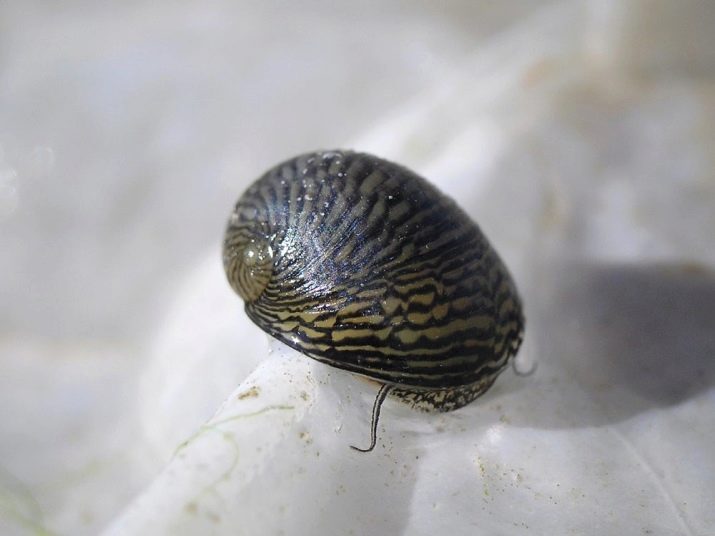
general description
These molluscs belong to the neritid family. Possible habitats include both fresh and slightly salty water bodies. Individuals are capable of reaching 2 centimeters in height. Their shell is rounded, with a slight curl at the end, a bit like a cup. The surface of the sole has a small yellowish cap, which serves so that theodoxus can block the entrance to his house, if necessary.
Aquarists are often attracted by the colors of these snails. It can be very diverse. The pattern remains unchanged, clearly standing out against a light or grayish background with bright dots or intermittent zigzag stripes. The shell of the molluscs is very durable due to their original needs. The fact is that nerithids live in reservoirs with a strong current, respectively, without a strong shell, they would have had a hard time in such conditions.
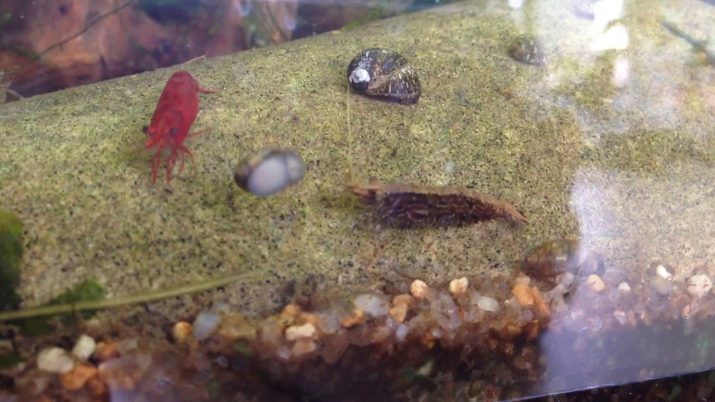
Aquarists especially appreciate the tropical members of the neritid family. It is these mollusks that look especially exotic, their appearance attracts attention.
It should also be noted that these snails perform a useful function in the aquarium. They are not interested in tall plants, but at the same time they are not indifferent to the plaque that appears on the walls of the aquarium.It must be said that at present these creatures are not yet too common for keeping a house, since few people are engaged in large-scale breeding, and the price for individuals is quite impressive.
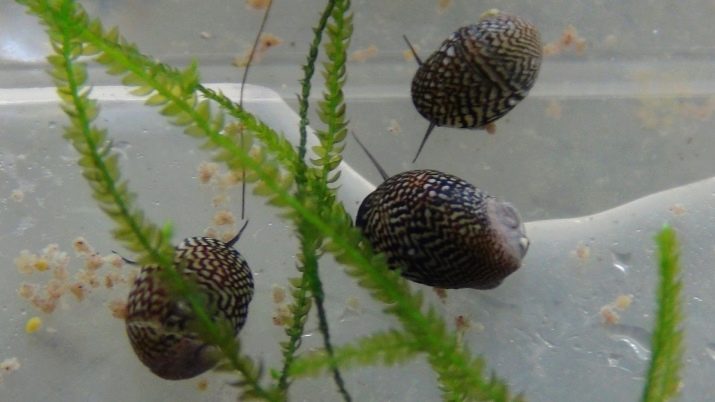
Main varieties
There are not so many varieties of these mollusks. We will consider the most famous of them.
- Theodoxus danubialis has a lime-colored shell. It shows a very clearly visible pattern formed by zigzags of different sizes. The maximum size of such snails can be 1.5 centimeters. Most often, in nature, they can be observed in reservoirs with hard water.
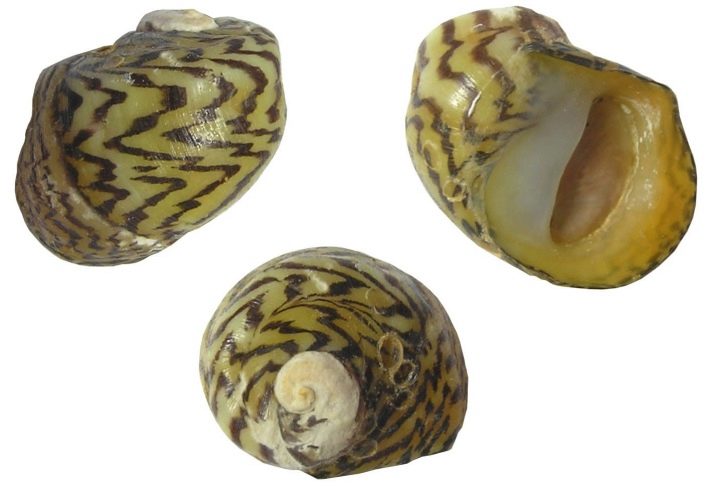
- Theodoxus fluviatilis - one of the most common varieties. They can be found not only in Scandinavia and Europe, but also in some regions of our country. They have a fairly dark shell, the color of which can be blue, purple or brown. The pattern is a large number of clear light specks.

Theodoxus fluviatilis has one characteristic feature. Before eating, the snail first rubs the vegetation on stones. For this reason, most often the mollusk lives in reservoirs with rocky ground.
- Theodoxus transversalis - these are small mollusks, and their shell has no pattern. They can have a grayish, brown or yellowish carapace.
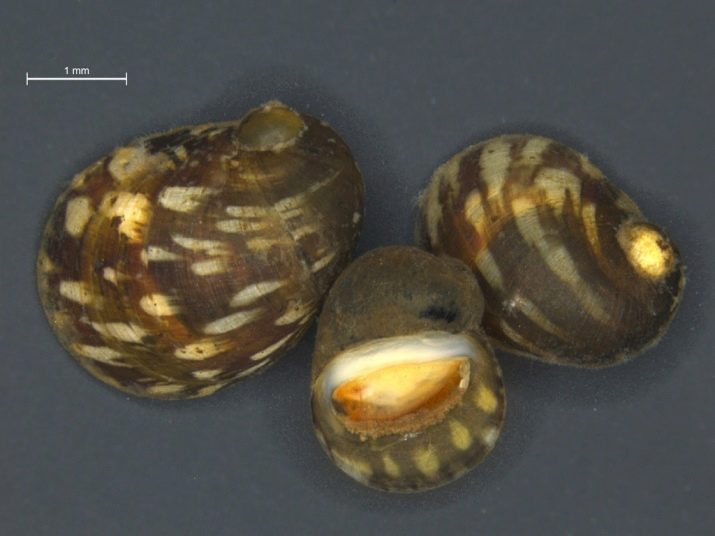
- It is impossible not to mention theodoxus euxine or the Black Sea. Its carapace is black and has a crescent-shaped groove inside. The color can be different, like the picture. The body is light gray, there are dark spots on the sides and head. Most often found in warm European countries, common in Greece and Romania. In Russia, it can be seen in the regions of the Black Sea coast.

- Theodoxus pallasi lives in brackish or salty water. Most often found on the Black Sea, Azov and Aral coasts. It can also live in rivers belonging to the basins of these seas. These snails are very small, they can grow no more than a centimeter. The gray-yellow carapace is decorated with a dark contrasting pattern.

- Theodoxus astrakhanikus is widespread in the region of the Sea of Azov and in the Dniester. The color of the carapace is predominantly yellow, the pattern consists of beautiful zigzags.
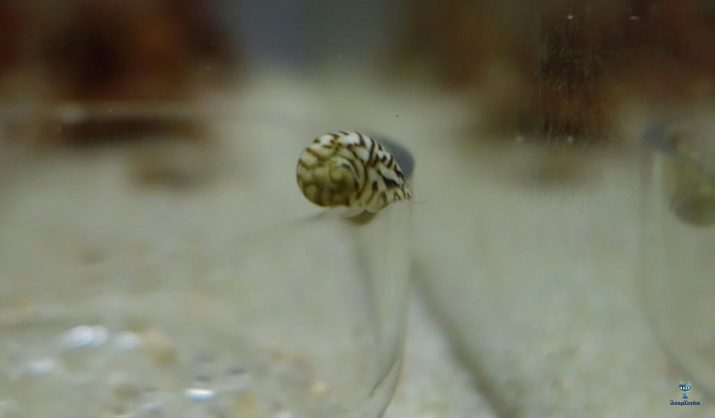
Content rules
These gastropods feel quite comfortable at home. Their maintenance is not difficult for aquarists. The main advantage is that you do not need to monitor the water temperature. The snail is suitable for both an indicator of +19 and +30 degrees.
There is no harm from these babies, but the benefits are significant. It should be noted that food for them is algae, which over time grows on the walls of the aquarium. Therefore, there is a kind of cleaning it. However, if the grass is too tough, the snails simply cannot cope with it. They are also not interested in tall plants, the owner should not worry about damaging them. In general, the habitation of such mollusks in an aquarium has many positive aspects, the main one of which is maintaining cleanliness in the tank without human effort.
Most of the subspecies prefer to live in hard water. This is due to the fact that it contains more calcium, which is required for the shell to be strong. Sea limestone stones are also useful for babies; they must be specially placed in the aquarium. The main thing to watch for is that the liquid does not stagnate, theodoxus simply cannot stand this.

Aquarists should keep in mind that approximately 6-8 individuals can be placed in one container. Snails are small in size, no more than 2 centimeters, so 1-2 pieces will be simply invisible. It is also worth considering the fact that a flock of 8 pieces will not have problems with reproduction even in an aquarium. It is almost impossible to distinguish between male and female. Molluscs can be not only heterosexual, but also bisexual.
It is necessary to say about another rather interesting feature of these aquarium creatures. Each snail has its own zone.This refers to the area in the aquarium where she can rest or eat. The mollusk needs a solid surface to rest. Cubs of theodoxus often settle in the shells of adults.

Breeding features
If theodoxus are doing quite well in a home aquarium, and the water temperature is right, there will be no problem with reproduction. Theodoxus can give offspring throughout the year. The average temperature of the liquid, comfortable for the above process, is about +24 degrees.
Molluscs reproduce by laying eggs. To do this, they need hard surfaces such as rocks or just the walls of the aquarium. The eggs themselves are small, about 2 millimeters in length, and are enclosed in several pieces at once in one oblong capsule. However, only one cub appears from the capsule, for which the rest of the eggs will serve as food.
It should be noted that small theodoxus grow very slowly. After they are born, they hide in the ground. Their shell during this period is white and very fragile. Over time, the shell darkens and acquires the required color, the patterns appear in more contrast. This is an indication that the clam has matured.
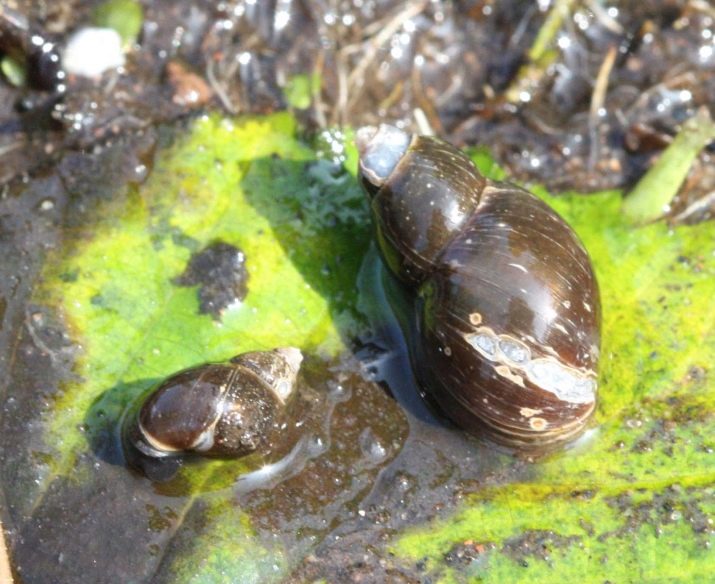
Sexual maturity in theodoxus kept at home occurs approximately when it reaches 6 months. In nature, this happens after 2 years, while babies live for about 2 and a half years. Males have a characteristic growth on the right side, which is necessary for mating. The main period of reproduction is considered to be from April to October.
Molluscs reproduce at intervals of 2-3 months. However, this does not mean that soon you will have to get rid of the new inhabitants of the aquarium. They grow very slowly, and live less than 3 years, which, to some extent, helps maintain balance. All of the above features make theodoxus a favorite of aquarists, they are acquired and started to breed more and more often, since the content does not cause trouble, and the kids bring significant benefits.
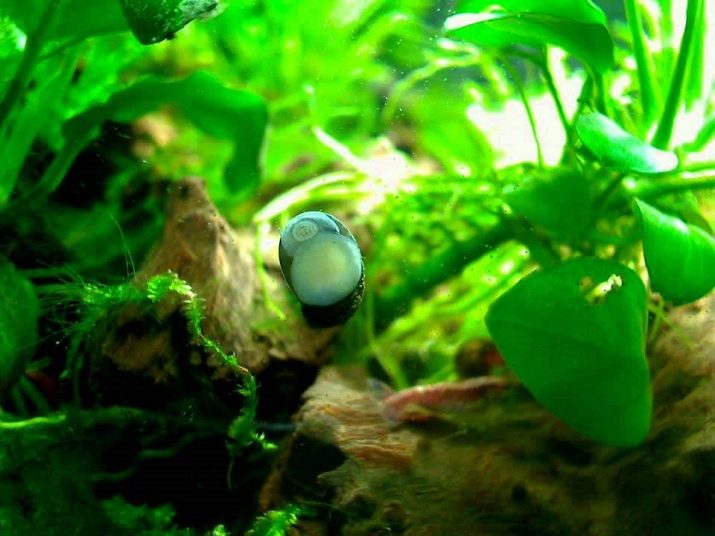
An overview of theodoxus snails in the video below.








